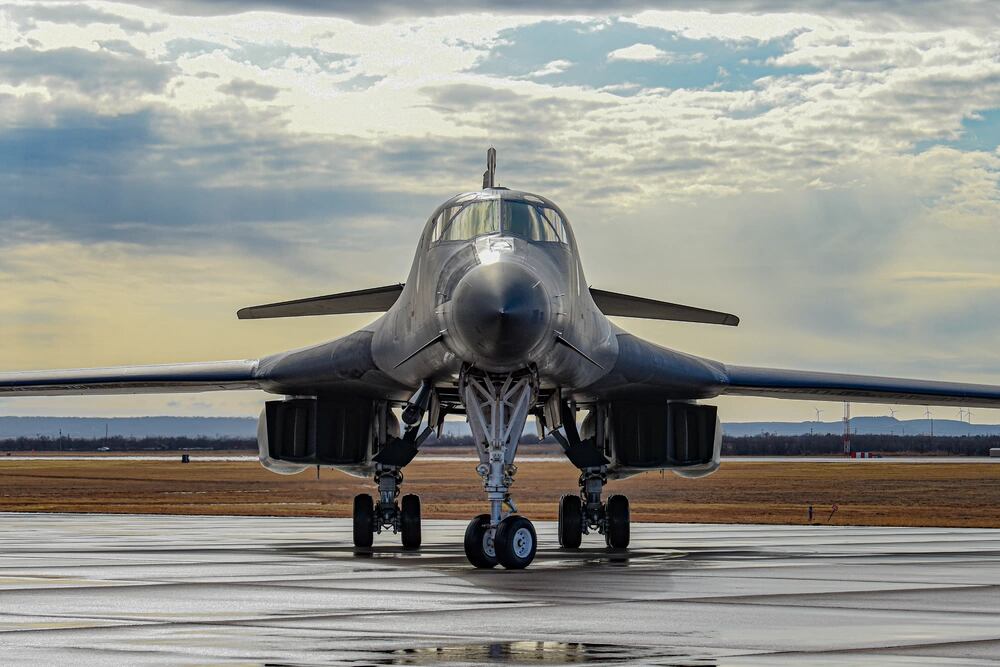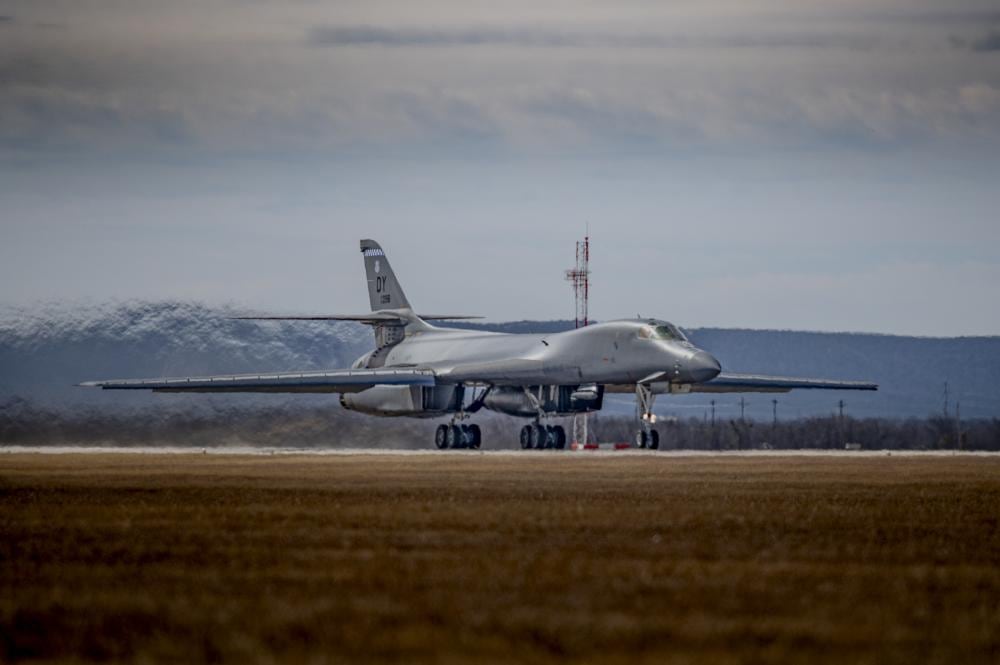A cracked engine part’s final breakdown caused the catastrophic fire that torched a B-1 Lancer bomber last spring, costing $15 million in damages, according to an Air Force investigation.
Mechanics with the 7th Aircraft Maintenance Squadron at Dyess Air Force Base, Texas, were running the bomber’s jet engine while fixing its hydraulics on April 20, the service said in an accident report approved Dec. 19. Investigators said a crack in a disk within the engine — to which the fan blades are attached — unexpectedly caused the part to fail during the maintenance check.
The Air Force published the report soon afterward but did not publicize its release. Air Force Times viewed the report Friday.
B-1 pilots noticed a potential problem with one of the plane’s four engines around 2 p.m. local time, when a nozzle that should have fully opened was still closed during “hot refueling” — the process of gassing up with the engine running on the ground.
The airmen called for propulsion specialists to take a look. Lancers are powered by four General Electric engines known as the F-101-GE-102.
“When the … pilots moved the #1 engine throttle to intermediate power, [its] nozzle … returned to its correct open position when the throttle was returned to idle,” the report said. “Satisfied that the issue had been resolved, the propulsion specialists departed.”
Soon after, though, the nozzle closed once again. One specialist thought a faulty thrust control component was behind the problem and needed further investigation. That was later ruled out.
Further checks showed that the component had failed because of problems with its hydraulic system, parts of which they replaced around 10 p.m.
“The [aircraft] then required a maintenance engine augmenter run … to check proper operations of the engine hydraulic pump and to ensure it did not leak fluid,” the Air Force report said.
RELATED

A half-hour into their work, the engine was running smoothly again. Then a warning light flickered on.
A fireball erupted on the left side and partially engulfed the jet. Flames rose about 200 feet high and flung engine parts up to 1,000 feet away. Hot shrapnel hit one airman’s right leg, causing lacerations, bone bruises and muscle injury.
Airmen scrambled to shut down the engine and firefighters responded to the scene. The hurt maintainer was treated at a local hospital and ordered to rest at home for one week. One other injured airman was also treated at a nearby hospital and released, the Air Force said at the time.
The fire was worst where the left wing connects to the bomber’s fuselage, melting the plane’s skin and peeling off metal components. It also torched critical mechanical, electrical and hydraulic components, the report said.
It’s unclear when the faulty fan disk began to break, the report said.
The engine was last overhauled in 2017 and could handle much more flying time before it was next scheduled for heavy maintenance, the report indicated. It was shipped from South Dakota to Dyess to fix an oil leak in April 2021, and was reinstalled in January 2022 onto the B-1 that would catch fire months later.
The fan disk had used only one-quarter of its projected service life, the report said. But the metal was worn from heating and cooling that occurs when a plane accelerates and decelerates, a common phenomenon known as “high-cycle fatigue.”
That cracked the disk, which warped further until the gap was nearly 1 inch deep. It punched a hole in the B-1′s engine when it failed, breaking other parts inside and sparking sky-high flames.
RELATED

Human error was not a factor in the incident, the report said. All airmen involved were fully qualified and followed proper maintenance procedures.
The report did not say what has happened to the toasted airframe since the accident.
The Air Force currently owns around 40 B-1Bs, which do not carry nuclear weapons, and is in the process of retiring the fleet. It received its first B-1B in 1985 and first deployed it in combat against Iraq in 1998. The planes are based at Ellsworth AFB, South Dakota, and at Dyess.
B-1Bs have been plagued by safety issues, from ejection seat woes to fuel tank problems. In 2018, a four-member Lancer crew received the Distinguished Flying Cross for safely landing their bomber while its wing was on fire.
The fleet is notorious for its lackluster readiness rates due to the time its planes spend in the shop. Investigators noted that less than 70% of the B-1s belonging to the 7th Bomb Wing could perform at least one core mission in the weeks surrounding the accident.
Rachel Cohen is the editor of Air Force Times. She joined the publication as its senior reporter in March 2021. Her work has appeared in the Washington Post, the Frederick News-Post (Md.), Air and Space Forces Magazine, Inside Defense, Inside Health Policy and elsewhere.





